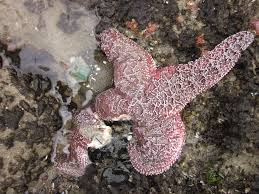
Introduction
Sea star wasting disease (SSWD) is a critical issue threatening marine ecosystems along the Pacific Coast of North America. First reported in 2013, this disease has led to mass die-offs of various sea star species, prompting concern among scientists, conservationists, and the fishing industry. Understanding the implications of SSWD is vital as it affects biodiversity and the health of marine habitats.
Recent Developments and Impact
Over the past decade, SSWD has been observed in over 20 species of sea stars, particularly affecting the sunflower star (Pycnopodia helianthoides), which has experienced dramatic population declines. Research indicates that this disease is linked to a densovirus, which weakens the immune systems of affected sea stars. Observations from marine biologists reveal that infected sea stars often display symptoms such as lesions, tissue loss, and eventual disintegration.
Recent studies conducted by institutions like the University of California, Santa Cruz, highlight alarming trends regarding the recovery of affected populations. While some species show slight signs of resilience, others face an uphill battle against the persisting threat of SSWD, significantly impacting the food web dynamics in coastal ecosystems.
Broader Ecological Consequences
The loss of sea stars has direct effects on marine ecosystems, as they play critical roles in controlling the population of mollusks and other invertebrates. For example, the decline of the sunflower star has led to increased populations of herbivorous sea urchins, which can decimate kelp forests, a vital habitat for many marine species. This shift creates a cascade effect, altering the biodiversity and stability of marine environments.
Future Prospects and Conservation Efforts
Scientists continue to investigate potential avenues for combating SSWD, including habitat restoration and breeding programs for resilient sea star populations. Collaborative initiatives between governmental agencies, research institutions, and conservation groups aim to monitor the situation and facilitate marine recovery. Additionally, public awareness and engagement are crucial for supporting conservation measures and understanding the importance of marine health.
Conclusion
Sea star wasting disease remains a pressing ecological challenge with far-reaching impacts on marine ecosystems. While current efforts aim to mitigate the crisis and support recovery, the situation emphasizes the need for ongoing research and conservation strategies. Protecting these vital species is essential not only for ecological balance but also for the sustainability of our oceans, highlighting the interconnectedness of marine life and the urgent need for action.



